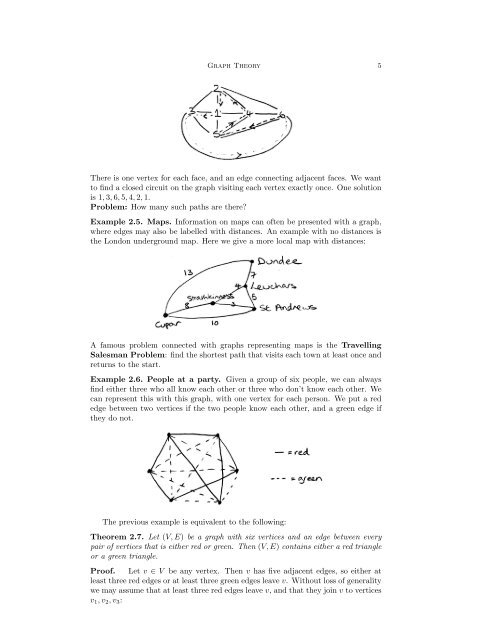You also want an ePaper? Increase the reach of your titles
YUMPU automatically turns print PDFs into web optimized ePapers that Google loves.
<strong>Graph</strong> <strong>Theory</strong> 5There is one vertex for each face, and an edge connecting adjacent faces. We wantto find a closed circuit on the graph visiting each vertex exactly once. One solutionis 1, 3, 6, 5, 4, 2, 1.Problem: How many such paths are there?Example 2.5. Maps. Information on maps can often be presented with a graph,where edges may also be labelled with distances. An example with no distances isthe London underground map. Here we give a more local map with distances:A famous problem connected with graphs representing maps is the TravellingSalesman Problem: find the shortest path that visits each town at least once andreturns to the start.Example 2.6. People at a party. Given a group of six people, we can alwaysfind either three who all know each other or three who don’t know each other. Wecan represent this with this graph, with one vertex for each person. We put a rededge between two vertices if the two people know each other, and a green edge ifthey do not.The previous example is equivalent to the following:Theorem 2.7. Let (V, E) be a graph with six vertices and an edge between everypair of vertices that is either red or green. Then (V, E) contains either a red triangleor a green triangle.Proof. Let v ∈ V be any vertex. Then v has five adjacent edges, so either atleast three red edges or at least three green edges leave v. Without loss of generalitywe may assume that at least three red edges leave v, and that they join v to verticesv 1 , v 2 , v 3 :













